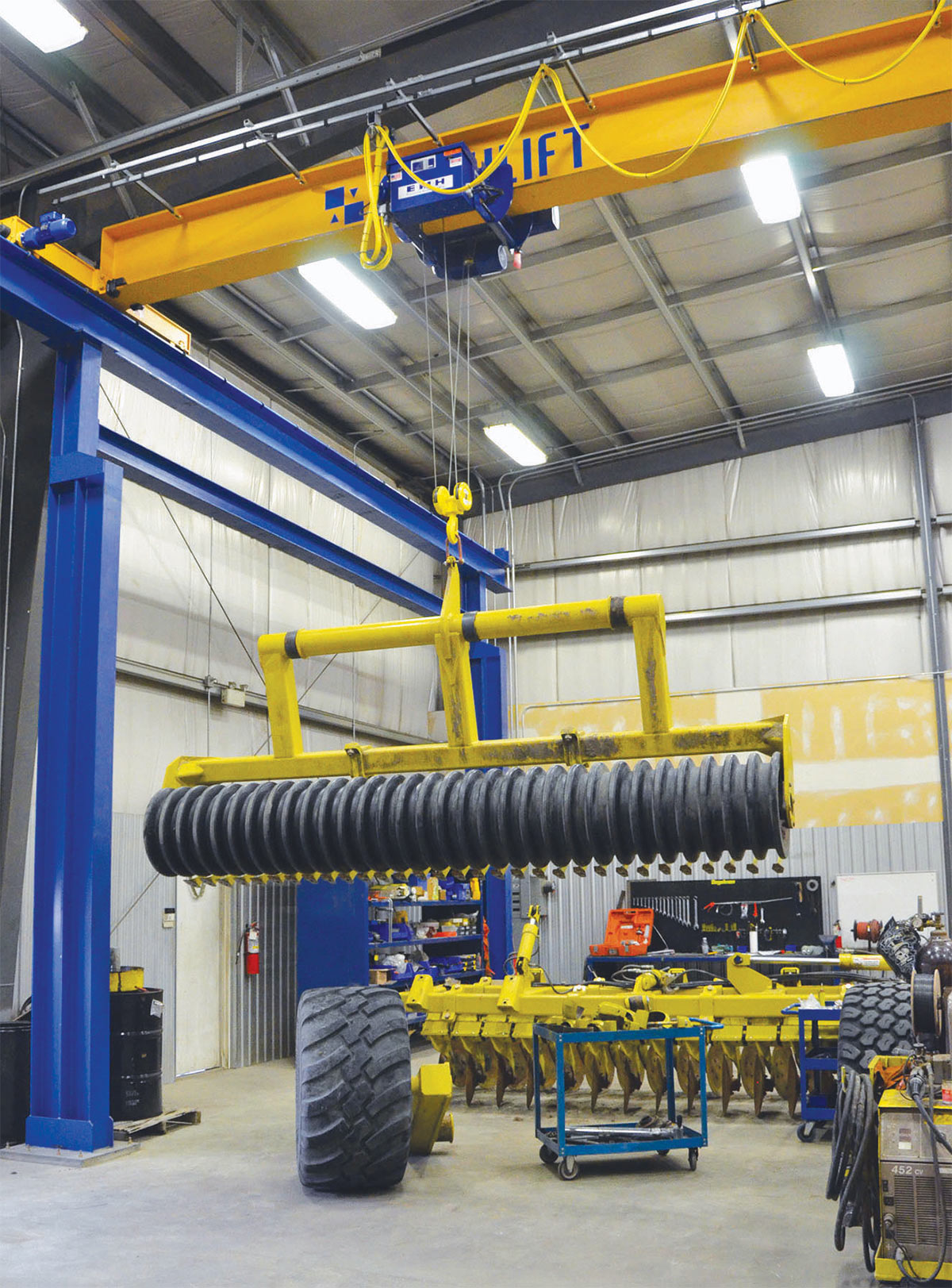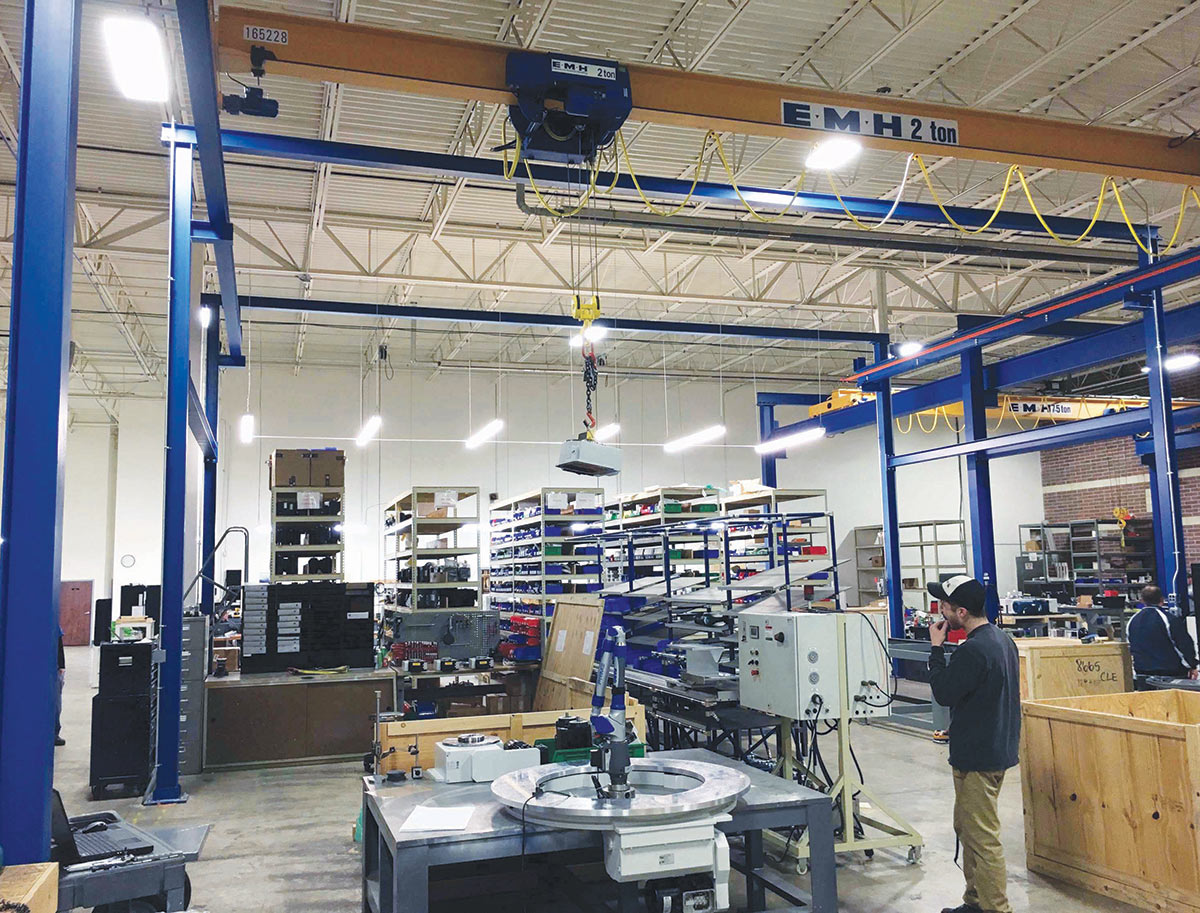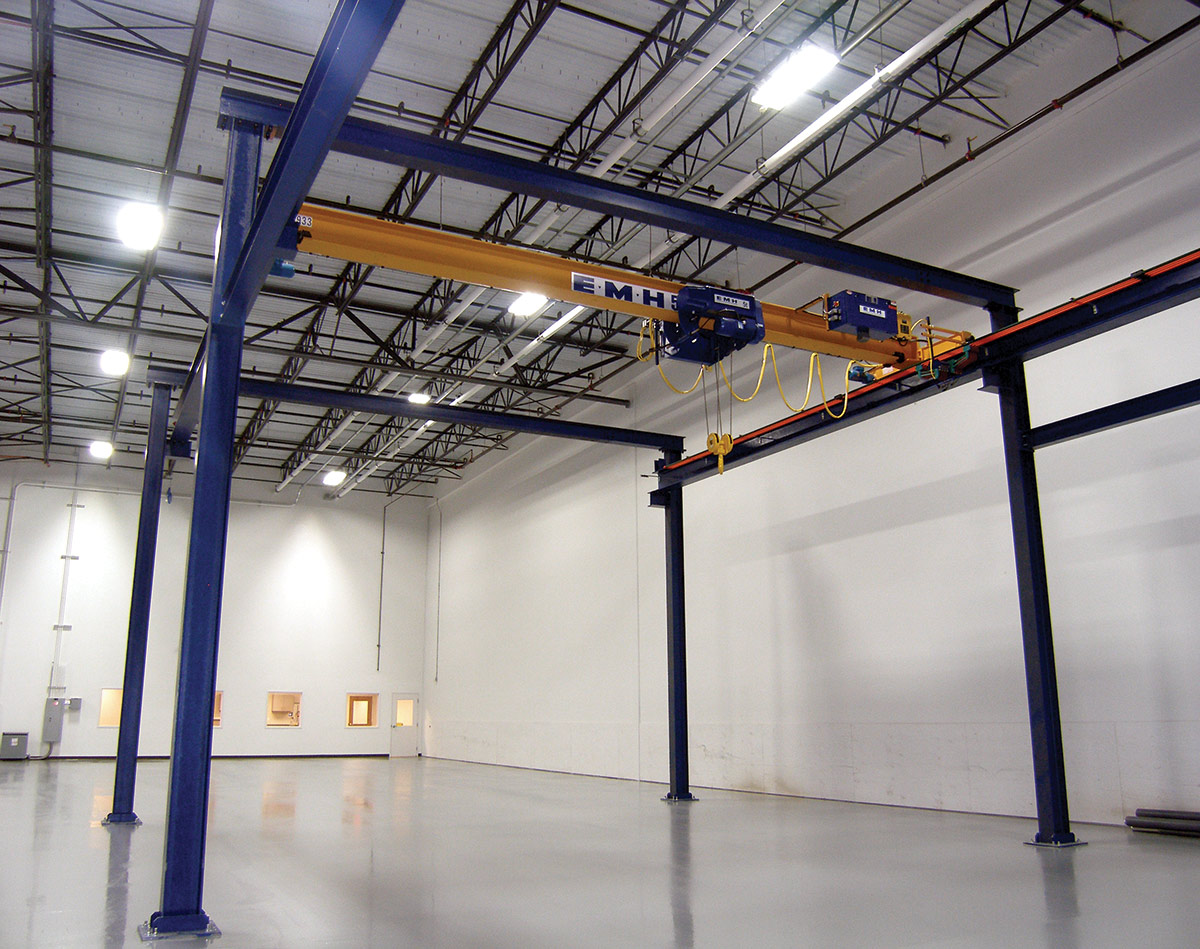
ndustrial real estate tenants can be very diverse. Tech companies, distribution companies and equipment rental businesses all have specific—and different—needs for the same space. Many of these companies also are looking for more flexibility as they navigate what Deloitte’s 2022 Manufacturing Industry Outlook characterizes as “positive economic indicators paired with historic labor and supply chain challenges.”
Deloitte analysts indicate in the report that “business agility can be critical for organizations seeking not only to operate through the turbulence from an unusually quick economic rebound but also to compete in the next growth period.”
“Buildings that can accommodate overhead cranes are either very expensive, very large or aren’t available right away,” says David Comiono, vice president and general manager of EMH, Valley City, Ohio, which designs, sells and manufactures a complete line of overhead material handling equipment solutions for loads from 25 pounds to 300 tons.

To accommodate these customers who need a crane but are finding it impossible or impractical to install a large overhead crane, EMH has developed the Nomad series of modular free-standing crane systems, which can be “readily installed and moved around. If you have a 100-foot-long building, for example, and you move to a bigger space, you can easily add on length as your operation grows,” Comiono explains. While it is more difficult to modify the width and height of the system, increasing length is “no problem.” In addition, EMH has “developed a lot of standard modules that can be easily modified to suit individual requirements, like accommodating column locations and tighter spaces.”
 EMH developed standard modules that can be easily modified to suit individual requirements.
EMH developed standard modules that can be easily modified to suit individual requirements. 
One EMH customer, a manufacturer of index tables for factory automation, needed 7 tons of capacity, a 40-foot width and an 80-foot runway. The company also had tight spacing on its plant floor, which required the system to be positioned above shelves. After installation, the manufacturer asked EMH to return and add emergency hard-stops so the crane would never go past a certain point and run into shelves with any given load. Nomad’s flexibility enabled the crane to accommodate both the tight parameters and adapt to real-time concerns.

For the index table manufacturer, the first Nomad installation focused on assembly, getting tables ready to ship. The second installation was for loading machines onto tool plates, and the third gave the company the ability to expand the assembly area.
Nomad free-standing cranes are also often combined with EMH’s lighter capacity aluminum rail systems (AL Systems), working in tandem to meet customers’ requirements.
In most facilities, Comiono says, Nomad cranes become an indispensable workstation tool. “They give manufacturers the opportunity to have a long runway with three or four cranes on it, and then each employee is responsible for a crane. The employee takes more responsibility and the crane becomes a tool, rather than just a generalized overhead crane”—and it’s very easy to move the equipment to a new facility or add on to accommodate growth.